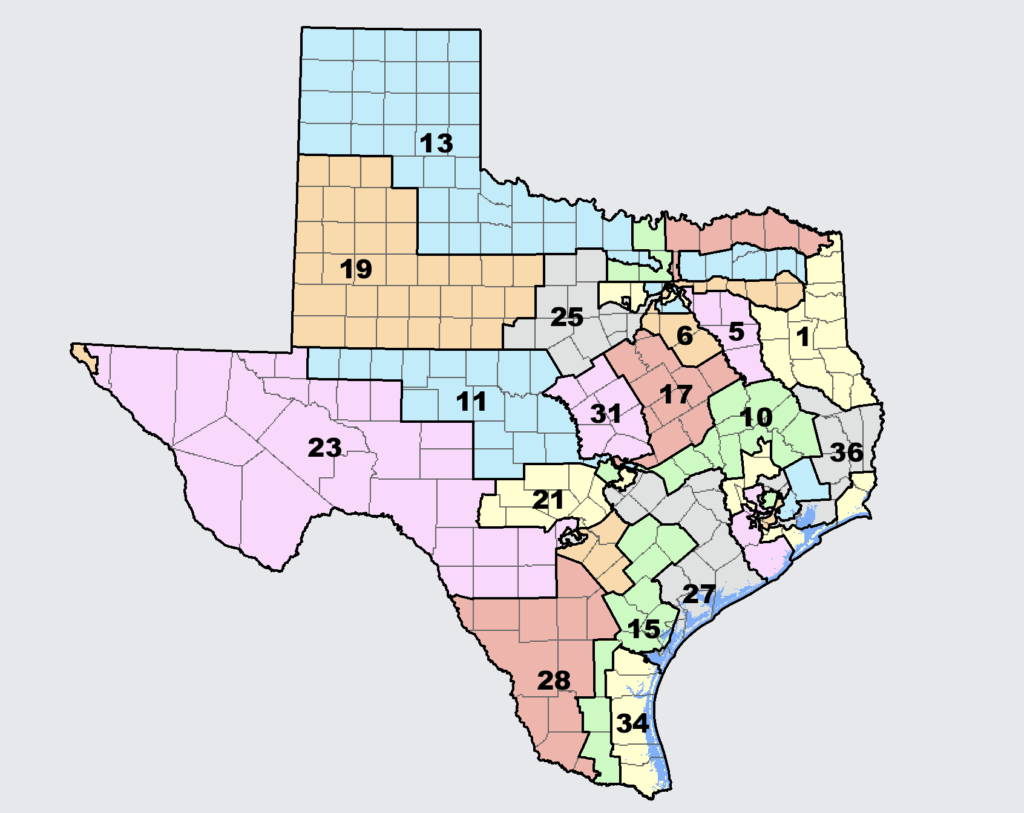The GOP Gerrymander in Texas: How They Rigged the Map

When President Donald Trump told Texas Republicans to find him five more GOP seats in Congress this summer, they hastily redrew their map to deliver exactly what he wanted.
The implications are stark: Texas showed the GOP will no longer hold the line to defend democracy, as some Georgia Republicans did in 2020 when they refused to “find” Trump enough votes to tip the election.
Even though minority groups make up 60% of the Texas population – and accounted for 95% of the state’s growth in the most recent Census – the new map slashes the number of congressional districts where they can elect the candidate of their choice from 34% down to 21%. Pro-voting advocates say that’s no accident.
“The method [the GOP] used in order to gain Republican seats was to systematically and overwhelmingly attack the voting strength of Blacks and Hispanics in Texas,” said Matt Angle, director of the Lone Star Project, a Democratic research and strategic communications PAC.
Now, minority voters* and voting advocates are preparing to fight the new Texas map at a hearing beginning Oct. 1.
As advocates pointed out in a recent court filing, all eight of the districts most impacted by the changes had majority-minority populations.
Democracy Docket took a close look at how the new map is designed to further dilute the strength of minority voters.
Dallas-Fort Worth
Minority voters previously were able to elect the candidate of their choice in three congressional districts in the Dallas-Fort Worth area (30, 32, 33). Now, there are just two.
Tarrant County’s District 33 is dismantled and cracked into multiple districts. Some Latino communities in the western part of 33 are split up into two majority-white, mostly rural districts (12 and 25)
Rep. Marc Veasey (33) and Rep. Jasmine Crockett (30) are drawn out of their districts, according to court filings.
Houston
Minority voters previously were able to elect the candidate of their choice in four districts in the Houston area (7, 9, 18, 29). That is reduced to three (7, 18, 29).
Black voters who formed a majority in two districts (9, 18), allowing them to elect a candidate of their choice, are now drawn into one district (18). Remaining minority populations of former Districts 9 and 18 are moved to District 29 and four majority-white, rural districts.
The new map adds majority-white, rural Liberty County to District 9, diluting the voting strength of Latino communities in east Houston. Republican candidates have already announced their campaigns in formerly left-leaning District 9.
San Antonio-Austin
- Minority voters were able to elect their candidate of choice in three districts in the San Antonio-Austin corridor (20, 35, 37). That’s reduced to two (20, 37).
- The former District 35 is eliminated by removing minority Austin communities and adding rural areas.
- Rep. Joaquin Castro (20) is drawn out of his district, according to court filings.
South Texas
The new map aims to flip two Hispanic majority seats in South Texas (28, 34).
In the former District 34, parts of Hidalgo County are removed and replaced with rural counties to the north and high-turnout white populations in the Corpus Christi area.
San Antonio neighborhoods are removed from the former District 28 and rural areas are added in.
*Some Texas voters are represented by the Elias Law Group (ELG). ELG firm chair Marc Elias is the founder of Democracy Docket.